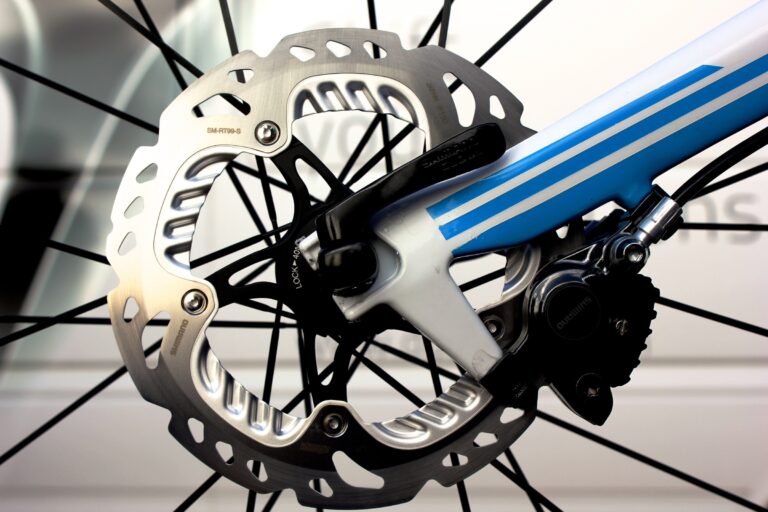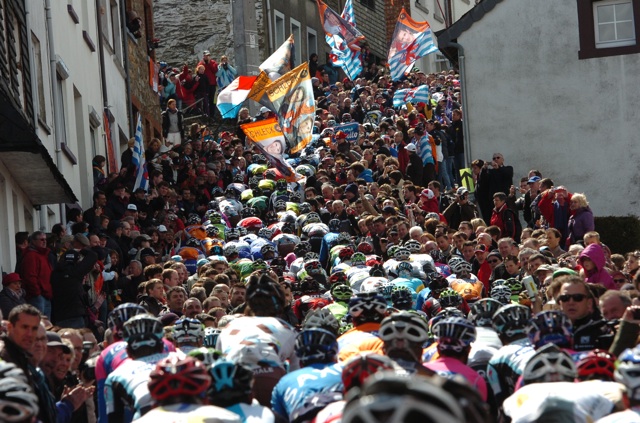Matching the chainset and cassette is second only to frameset choice in determining the ‘style’ of road bike that we ride.
But with the current trend leaning towards wider ratios, the classic stereotype of the racer on a ‘standard’ 53-39-tooth double chainring at the front with an 11-23t or 11-25t (or even tighter) cassette at the back, and the sportive rider packing a compact 50-34t chainset paired with a 11-28t cassette, might be fading. It used to be clear cut, but times are changing and use of the word ‘standard’ in reference to a chainset isn’t as clear as it used to be.
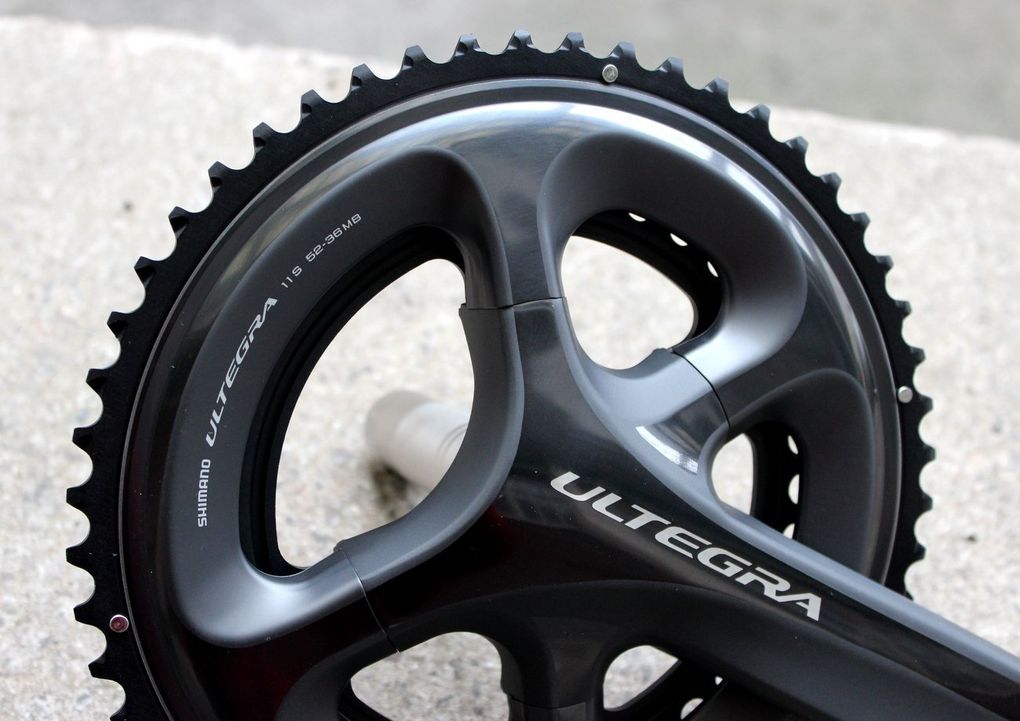
Of course, those drivetrain combinations still do apply to many cyclists. There are die-hard riders who wouldn’t dream of riding on anything smaller than 53-39t, regardless of how hilly the terrain, while many newcomers to the sport and sportive riders find that the classic setup is a bit of a handful, especially when it comes to climbing the big or steep stuff, and a compact offers a more realistic spread of gears.
However, in recent years the development of the chainset and cassette has done an about turn from large chainrings and small cassette sprockets, to smaller chainrings and increasingly wide ratios at the back, with a 28-tooth rear sprocket commonplace and anything up to 32-teeth on some endurance road bikes. The widespread adoption of the compact chainset in the mid-2000s offered a new range of lower gears for riders who live in a hilly area or fall outside of the traditional racing fraternity – and, given the growth of the sport in the UK, that’s the majority – without resorting to a triple. It’s not that the ‘standard’ 53-39t chainset has disappeared – far from it – but even in the pro peloton riders are smart enough to realise when it’s better to swallow the pride and swap out gear ratios for mountain stages.
But that’s not to say a two-way choice between the double and compact satisfies all appetites, and this has seen the development of the 52/36t ‘semi-compact’ (or ‘faux pro’) chainset, which opens up a halfway house which may fit the needs of the sportive rider and racer alike.
“The semi-compact, as the name suggests is a happy middle ground and makes a lot of sense, especially if you want a level of performance to your riding,” says Neil Webb, a long-time roadie and founder of Bowman Cycles.
“A 36-tooth inner ring means on the majority of climbs your in the middle of the cassette with a better chain line. You have a bail out gear or two for when your amateur legs make an appearance, and a 52 is plenty big enough for a non-pro.”
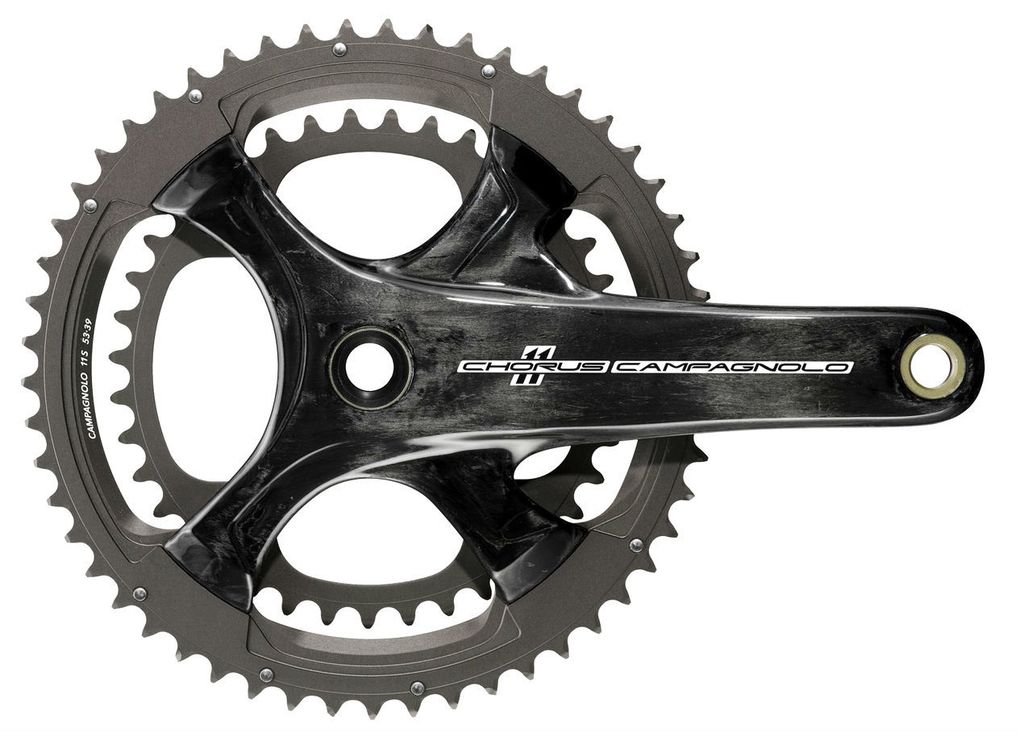
Bolt circle diameter and interchangeable chainrings
The semi-compact has arrived hand-in-hand with interchangeable sets of chainrings, which mean you can now realistically swap between standard, semi-compact and compact rings on a number of 11-speed chainsets without the need to splash out on a new crank spider.
Typical of the new breed of chainset is FSA’s SL-K Light BB386EVO, an adaptable 11-speed chainset with a 110mm bold circle diameter (BCD) that will take combinations from 53-39t, 52-36t or 50-34t, all the way down to 46-36t – with the latter being firmly in cyclo-cross territory.
“Flexibility is the way forward, but as we’re primarily an original equipment manufacturer [supplying parts for bike manufacturers to spec on off-the-shelf machines], FSA tend to follow where the big manufacturers like Shimano go,” says Russell Harding from FSA UK.
“The technology and materials are now available so that it’s possible to swap chainrings without the need for a different BCD-sized crankset and without compromising performance. You had to start the BCD revolution somewhere, and it’s started with 11-speed.”
110 BCD is the size used on compact chainsets but the technology is now available to fit larger rings to that diameter – those that previously required a 130 or 135 BCD, depending on whether they were Shimano or Campagnolo. Both groupset manufacturers now offer a standardised BCD across their Dura-Ace, Ultegra and 105 (Shimano), and Super Record, Record and Chorus (Campagnolo) chainrings, regardless of whether it’s a 53-39t, 52-36t or 50-34t setup.
This ability to swap chainrings at will means that you can bring about a complete change in a bike characteristics at relatively little expense, compared with replacing the whole chainset. But is this flexibility a good thing? Yes, you could simply put a smaller set of rings and swap out the cassette for something bigger on your fully-slammed Pinarello Dogma F8, but would that be the ‘right’ thing to do? It’s not a sportive bike, and this flexibility could encourage riders to choose bikes with geometry that’s not right for them.
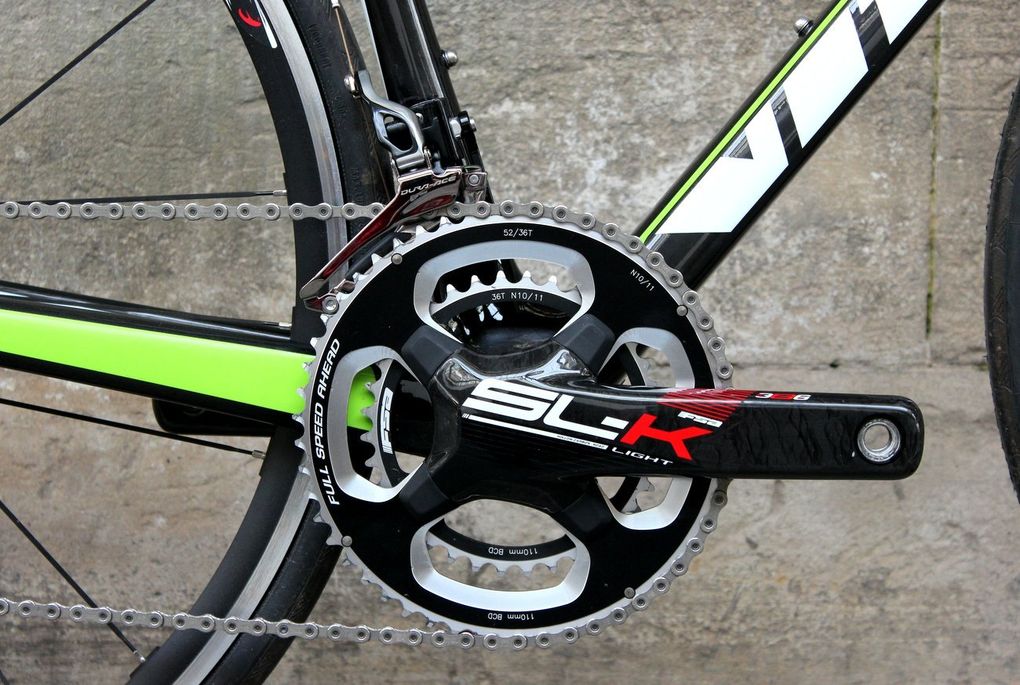
Where Shimano go…
We’re not normally keen on the word ‘compromise’, as it often means sitting on the proverbial fence, but this is where the 52-36t semi-compact chainset comes in.
As Kieran Frend, press officer for Shimano’s UK distributor, Madison, points out, the Japanese firm tends to adapt quickly to market trends and were the first major manufacturer to really push the semi-compact format – and, as FSA’s Harding says, where Shimano go, others usually follow. One really interesting aspect of our conversation with Frend was the suggestion that 52-36t might become the standard for the UK market.
“There is a clear indication that both pro racers and club riders alike are using lower gears,” adds Frend, “and that cyclo-cross, just as we’ve seen in mountain biking, will probably steer towards a single ring setup.”
But the real key is what bicycle manufacturers want, as that in itself is a reflection of consumer demand – or, at least, the perception of consumer demand. When we asked Frend whether bike manufacturers were demanding more semi-compact chainsets, his answer was that it’s beginning to happen, but it still depends on the intended use of the bike, which, of course, makes sense.
It is undoubtedly a shift that’s beginning to happen, though. While the semi-compact chainset has been available for more than a year, only now is starting to be specced with any regularity on off-the-shelf bikes. In fact, the last two test bikes to arrive at RoadCyclingUK for review, the Bianchi Oltre XR1 and Vitus Vitesse Evo Team, are both equipped with a semi-compact chainset (Campagnolo Chorus and FSA S-LK Light respectively). Both are race bikes at heart but by speccing semi-compact chainrings, rather than 53-39t, Bianchi and Vitus are offering more versatility for amateur cyclists whose riding, in reality, is going to include far more than full-gas races, whether it’s the Sunday club run or a mountainous sportive.
Canyon are another manufacturer to embrace the semi-compact, now offering it as an option on all 2015 Ultimate and Aeroad models, describing 52-36t as a ratio which “combines all the benefits of both compact and standard…for all riders and every terrain”. The best of both worlds means a 52-tooth chainring for attacking descents and sprints, while maintaining a smooth chain line from the big ring when riding on flat roads, and a 36-tooth inner ring which, of course, offers a lower gear for climbing than a 39-tooth ring.
“Riders want to work at a higher cadence as opposed to mashing the big gears,” explains Joshua Riddle, press officer for Campagnolo. “This makes sense and unless you can maintain that high cadence with a 53-39t then you’re going to ride more efficiently with a 52-36t combination.” He also added that even the pros are keen on this solution for certain stages.
As we’ve already alluded to, Campag have adopted a standardised BCD across their latest 11-speed chainsets so, once again, you can simply change chainrings rather than chainsets if you want to make a switch. “Super Record, Record and Chorus have become much more adaptable for every style of rider,” says Riddle.
However, Riddle says that despite growing interest for semi-compact rings, the vast majority of demand is still for Campagnolo’s compact chainsets. Along with the introduction of an 11-29t cassette, it seems that Campag have firmly set their stall in the corner of lower gearing.
Completing the groupset ‘big three’ after Shimano and Campagnolo, SRAM are yet to adopt a universal BCD, with their 53-39t chainsets using a 130mm bolt circle diameter and their 52-36t, 50-34t and 46-36t options using a 110mm BCD crank-arm spider. However, SRAM’s road drivetrain production manager, JP McCarthy, told us that they see it as a great time to be a road cyclist, because the very definition of ‘road cyclist’ is changing. With their WiFli technology on the road that’s been used by the likes of Alberto Contador in the past, riders can get up to 32t on the cassette with the use of a mid-cage rear derailleur, giving a far wider range of gears than ever before. McCarthy also suggested that with the inception of SRAM’s single-ring drivetrain technology, the future of the chainset is still developing. While he wouldn’t be drawn when we asked whether SRAM’s 1×11-speed Force CX1 cyclo-cross technology would be ported over to road bikes any time soon, he did tell us to stay tuned for some big announcements over the next few weeks…
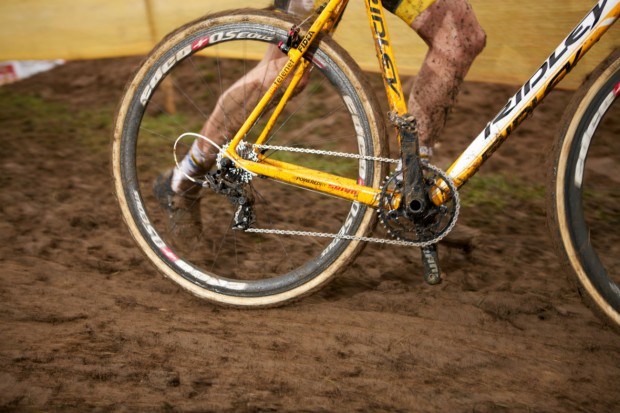
Pro perspective
As for the pros, Lars Teutenberg, technical adviser to Orica-GreenEDGE, came up with an interesting slice of inside information.
“Our riders usually use 53-39t, but on really steep hills they’ve used 53-36t or even 52-34t. Although this isn’t standard practice for Shimano combinations as front mechs usually don’t work well when there’s a spread of 16 teeth or more, we’ve made them work just fine,” says Teutenberg. That’ll be the magic touch of pro mechanics, then. Teutenberg adds this is often complemented by an 11-25t cassette at the back, or an 11-28t cassette for a hilly day in the saddle.
Regardless of what perspective you look at it from, be it as a rider, component manufacturer, bike brand or the pro peloton, the chainset has evolved significantly in a short space of time. While the standard double remains the setup of choice for racing cyclists, the introduction of the compact chainset and wide-ranging cassette ratios revolutionised gearing for the sportive set – and now the semi-compact bridges the gap, giving riders three widely-adopted and, in many cases, inter-changeable options to satisfy most demands. Maybe the ‘standard’ chainset isn’t so standard after all.



